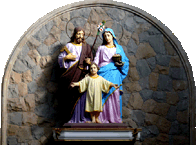|
The Chikoo tree is a slow-growing tree with reddish wood that is strong, durable and wind-resistant.
It has calorie rich fruits called 'chikoos' that are considered a super fruit as they contain high levels of vitamins A and C that aids in boosting immunity, skin and gut health. They are also rich in polyphenols that contain anti-parasitic, anti-viral, anti-inflammatory and anti-bacterial properties.
Additionally, they also contain high levels of potassium, copper, phosphorus, iron, magnesium and sodium which are good for keeping blood pressure levels, bone and hair health in check.
Besides these, they are a good source of energy due to their high levels of glucose and calories. Therefore, they are even good for pregnant women as it helps reduce weakness, dizziness and nausea.
The Chikoo tree produces a lot of latex (gum) called 'chicle' within the stem and fruit of the tree. However, the fruit loses its latex content as it ripens. Its latex was traditionally used as the main ingredient of Chicklet, a chewing-gum, which was then gradually replaced by synthetic gums. Some countries such as Mexico and Guatemala still use the natural chicle, which is where the Spanish name of gum 'chicle' stems from.
The Ballari district of Karnataka is the largest producer of Chikoo in India. It is followed by Maharashtra, Gujarat, Tamil Nadu, Andhra Pradesh and West Bengal.
It can be propagated either by seeds or grafting of branches.
There are 2 Chikoo trees on our Church premises at the moment, one of which is very young.
IMPORTANT: The information on this website has been compiled from reliable sources, such as reference books. It is not a substitute for medical advice or treatment. Readers should always consult their physician before using or consuming a plant for medicinal purposes.
--- Click here for information about other trees on Holy Family Church campus ---
|
